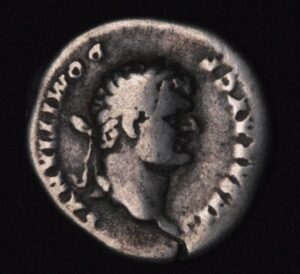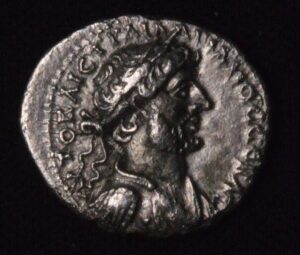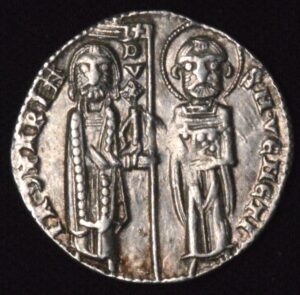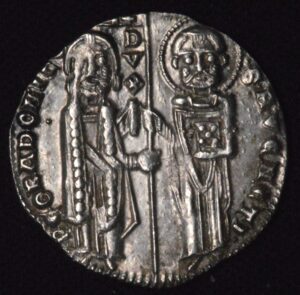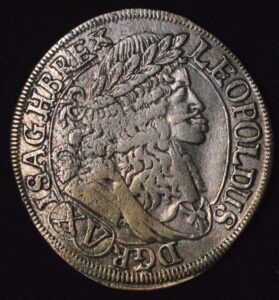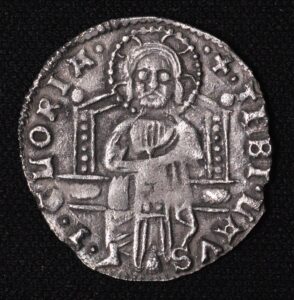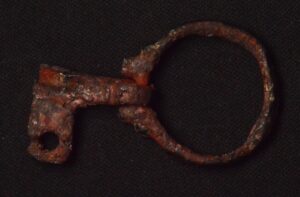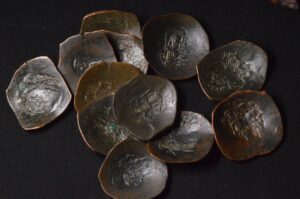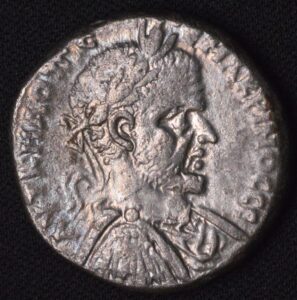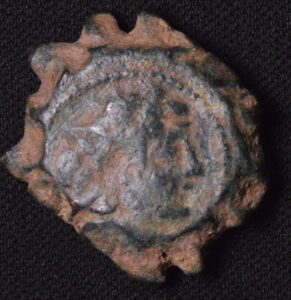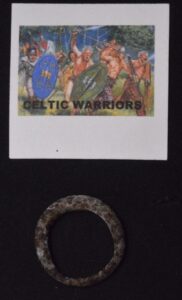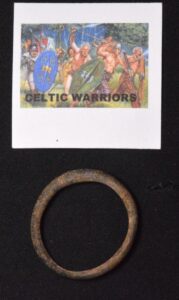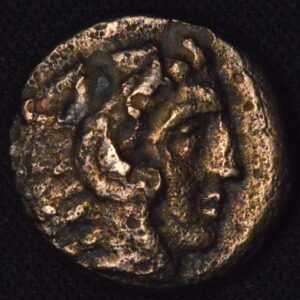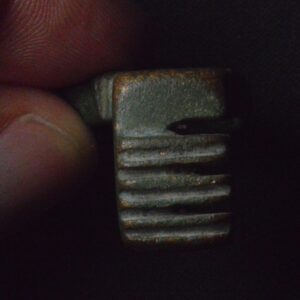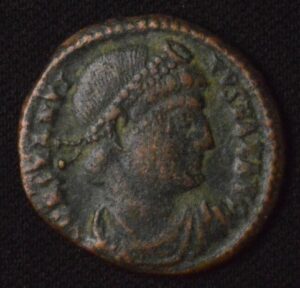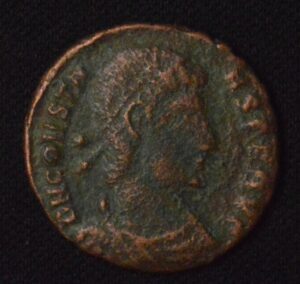Description
The Seleucid serrated coins attributed to Alexander I Balas, who ruled from approximately 152 to 145 BC, are distinctive bronze and sometimes silver issues with serrated or “scalloped” edges, a feature characteristic of certain Seleucid coinage. Alexander I Balas was a claimant to the Seleucid throne during a period of dynastic conflict and usurpation, and his coinage reflects both royal propaganda and local minting innovations.
These serrated coins typically measure about 18 to 20 millimeters in diameter and weigh a few grams (for bronze types), striking a balance between portability and detailed design. The obverse often depicts a diademed head of Alexander I Balas facing right, while the reverse includes iconography such as Apollo, Zeus, or standing figures of Nike or Athena, along with inscriptions identifying the king. The serrated edge helped deter clipping—the illegal shaving of precious metal—and also served as a distinctive stylistic feature that visually set these coins apart in circulation.
Many of Alexander I Balas’s serrated coins were minted in key Seleucid cities such as Antioch, Tyre, and Sidon, each contributing monograms or local marks. The inscriptions commonly feature his royal titles, emphasizing his claim as “Basileus Alexander Theopator Euergetes” (“King Alexander, Father-Loving Benefactor”). These coins, though produced during a troubled reign, exhibit strong Hellenistic artistry consistent with Seleucid numismatic traditions.
Collectors value the serrated coins of Alexander I Balas for their historical significance in a tumultuous Seleucid era, the unusual serrated minting, and their legible, elegant designs. The coins illustrate a fascinating intersection of political ambition and monetary innovation within the Hellenistic kingdoms. Their rarity and unique serrated borders make them prized pieces in Seleucid coin collections and ancient coin portfolios in general.
Overall, the serrated bronze and silver coins of Alexander I Balas, dated roughly 152–145 BC, encapsulate Hellenistic royal iconography, minting ingenuity, and the political upheavals of the late Seleucid dynasty, making them both historically and artistically rich numismatic items.
The Seleucid serrated coins attributed to Alexander I Balas, who ruled from approximately 152 to 145 BC, are distinctive bronze and sometimes silver issues with serrated or “scalloped” edges, a feature characteristic of certain Seleucid coinage. Alexander I Balas was a claimant to the Seleucid throne during a period of dynastic conflict and usurpation, and his coinage reflects both royal propaganda and local minting innovations.
These serrated coins typically measure about 18 to 20 millimeters in diameter and weigh a few grams (for bronze types), striking a balance between portability and detailed design. The obverse often depicts a diademed head of Alexander I Balas facing right, while the reverse includes iconography such as Apollo, Zeus, or standing figures of Nike or Athena, along with inscriptions identifying the king. The serrated edge helped deter clipping—the illegal shaving of precious metal—and also served as a distinctive stylistic feature that visually set these coins apart in circulation.
Many of Alexander I Balas’s serrated coins were minted in key Seleucid cities such as Antioch, Tyre, and Sidon, each contributing monograms or local marks. The inscriptions commonly feature his royal titles, emphasizing his claim as “Basileus Alexander Theopator Euergetes” (“King Alexander, Father-Loving Benefactor”). These coins, though produced during a troubled reign, exhibit strong Hellenistic artistry consistent with Seleucid numismatic traditions.
Collectors value the serrated coins of Alexander I Balas for their historical significance in a tumultuous Seleucid era, the unusual serrated minting, and their legible, elegant designs. The coins illustrate a fascinating intersection of political ambition and monetary innovation within the Hellenistic kingdoms. Their rarity and unique serrated borders make them prized pieces in Seleucid coin collections and ancient coin portfolios in general.
Overall, the serrated bronze and silver coins of Alexander I Balas, dated roughly 152–145 BC, encapsulate Hellenistic royal iconography, minting ingenuity, and the political upheavals of the late Seleucid dynasty, making them both historically and artistically rich numismatic items.
The Seleucid serrated coins attributed to Alexander I Balas, who ruled from approximately 152 to 145 BC, are distinctive bronze and sometimes silver issues with serrated or “scalloped” edges, a feature characteristic of certain Seleucid coinage. Alexander I Balas was a claimant to the Seleucid throne during a period of dynastic conflict and usurpation, and his coinage reflects both royal propaganda and local minting innovations.
These serrated coins typically measure about 18 to 20 millimeters in diameter and weigh a few grams (for bronze types), striking a balance between portability and detailed design. The obverse often depicts a diademed head of Alexander I Balas facing right, while the reverse includes iconography such as Apollo, Zeus, or standing figures of Nike or Athena, along with inscriptions identifying the king. The serrated edge helped deter clipping—the illegal shaving of precious metal—and also served as a distinctive stylistic feature that visually set these coins apart in circulation.
Many of Alexander I Balas’s serrated coins were minted in key Seleucid cities such as Antioch, Tyre, and Sidon, each contributing monograms or local marks. The inscriptions commonly feature his royal titles, emphasizing his claim as “Basileus Alexander Theopator Euergetes” (“King Alexander, Father-Loving Benefactor”). These coins, though produced during a troubled reign, exhibit strong Hellenistic artistry consistent with Seleucid numismatic traditions.
Collectors value the serrated coins of Alexander I Balas for their historical significance in a tumultuous Seleucid era, the unusual serrated minting, and their legible, elegant designs. The coins illustrate a fascinating intersection of political ambition and monetary innovation within the Hellenistic kingdoms. Their rarity and unique serrated borders make them prized pieces in Seleucid coin collections and ancient coin portfolios in general.
Overall, the serrated bronze and silver coins of Alexander I Balas, dated roughly 152–145 BC, encapsulate Hellenistic royal iconography, minting ingenuity, and the political upheavals of the late Seleucid dynasty, making them both historically and artistically rich numismatic items.
CUSTOMER FEEDBACK








Related Products & Newly Released!
-
$70.00
-
$70.00




SHIPPING POLICY
Your order is shipped from the United States with USPS tracking within one business day.
14 Day Return Policy
You can return your item back within
14 days of the purchase

Secure payments
Your payments are 100% secure and are processed through Square or PayPal on a protected security network.
SHIPPING POLICY
FREE International and Domestic (United States) shipping. Your order is shipped with USPS tracking 24 hours after you order.
14 Day Return Policy
You can return your item back within
14 days of the purchase

Secure payments
Your payments are 100% secure and are processed through Square or PayPal on a protected security network.
RESOURCES
support
Get Real Deals!
Sign up now to receive our articles for the latest insights and promotions!
RESOURCES
support
Get Fresh Articles!
Signup our newsletter to get update insight or promotions.






